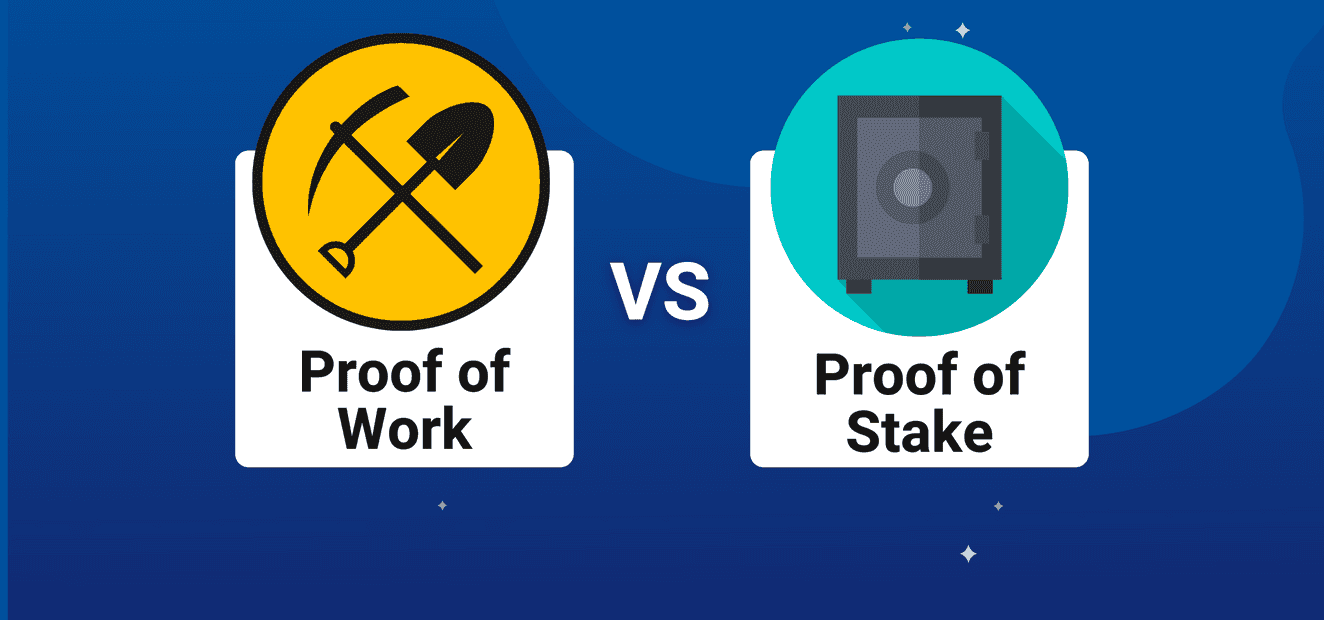The world of digital currencies has evolved rapidly in recent years, and a significant part of this progress can be attributed to the development of consensus mechanisms. Consensus mechanisms are the underlying systems that allow cryptocurrencies to maintain their decentralized nature, enabling the network to agree on the validity of transactions. One such mechanism that has gained prominence is Proof-of-Stake (PoS).
In this article, we will explore the concept of PoS, its advantages, and how it works, focusing on making it accessible to beginners in the world of cryptocurrencies.
The Evolution: Proof-of-Stake Versus Proof of Work
In the early days of cryptocurrencies, Proof-of-Work (PoW) was the dominant consensus mechanism. It was introduced by Bitcoin and has been adopted by numerous other cryptocurrencies. PoW relies on miners using computational power to solve complex mathematical problems, with the winner receiving the right to add a new block to the blockchain and earn a reward. However, this approach has proven to be energy-intensive and environmentally unfriendly.
As a response, Proof of Stake was proposed as an alternative. In the debate of Proof-of-Stake vs Proof-of-Work, PoS is considered a more eco-friendly and sustainable option. Instead of relying on computational power, PoS selects validators based on the number of coins they hold and are willing to "stake" as collateral. This change in mechanism has led to a significant reduction in energy consumption.
Advantages of Adopting Proof-of-Stake
There are several benefits to adopting PoS as a consensus mechanism:
- Energy efficiency and environmental sustainability: by replacing energy-intensive mining with staking, PoS significantly reduces the carbon footprint of cryptocurrency networks.
- Enhanced network security and attack resistance: in PoS, an attacker would need to control a majority of the staked coins to compromise the network, making it much more expensive and less feasible.
- Encouraging long-term investment in cryptocurrency: with PoS, long-term investors are rewarded for staking their coins, as this helps secure the network and maintain its stability.
The Mechanism Behind Proof-of-Stake
So, how does proof of stake work? In PoS systems, users "stake" their coins by locking them in a wallet, effectively acting as virtual miners. Validators are then chosen to create new blocks based on various factors, including the amount of cryptocurrency they have staked and the duration for which they have held it – a concept known as "coin age."
When a validator is chosen, they create a new block and receive a staking reward for their efforts. This incentive system encourages more users to participate in the network, securing it further.
Notable Proof-of-Stake Cryptocurrencies
There are several Proof-of-Stake blockchains that have adopted PoS as their consensus mechanism:
- Peercoin: one of the first PoS cryptocurrencies, Peercoin combines both PoW and PoS to maintain network security.
- NXT: another early PoS-based cryptocurrency, NXT was built from scratch with PoS in mind and does not use mining.
- Ethereum 2.0, Cardano, and Polkadot: these modern proof of stake cryptocurrency projects have embraced PoS, with Ethereum transitioning, etc.
Ensuring Security with Proof-of-Stake
A primary concern for any cryptocurrency is the security of its network. In the case of Proof-of-Stake, various mechanisms are employed to maintain a secure and stable environment. One such measure is "slashing," which penalizes validators for malicious behavior or not performing their duties correctly. Slashing may involve a partial or full loss of the staked coins, providing a strong incentive for validators to act honestly.
However, Proof-of-Stake is not without potential issues. Long-range attacks can occur when an attacker attempts to create a new blockchain fork, starting from a point far in the past. Validators may be inclined to switch to this new fork, as they have nothing at stake on the original chain (the "nothing at stake" problem). To mitigate this risk, PoS systems use checkpointing or other techniques that require validators to lock their stakes for a certain period, discouraging them from attempting to build on multiple competing chains.
Proof-of-Stake: A Validation, Not a Certificate
It is essential to understand that Proof-of-Stake is not a certificate but rather a validation mechanism. The primary purpose of PoS is to verify transactions and secure the network by maintaining a distributed consensus. A certificate, on the other hand, is a digital document that verifies the identity of an individual or organization. The confusion may arise because both PoS and certificates involve the concept of validation, but their functions and purposes are entirely different.
Earning with Proof-of-Stake: Staking and Rewards
One of the appealing aspects of Proof-of-Stake systems is the potential for passive income through staking rewards. To become a validator in a PoS network, a user typically needs to hold a minimum amount of the cryptocurrency in a wallet and lock it as a stake. The network then randomly selects validators based on their stakes and other factors, such as the age of the coins.
Validators who successfully create new blocks and validate transactions are rewarded with a portion of the transaction fees or newly minted coins. This incentivizes long-term investment in the network and encourages users to maintain an active interest in the cryptocurrency's security and stability. However, it's essential to consider the potential risks associated with staking, such as price fluctuations and the possibility of being slashed for misbehavior.
The Future of Proof-of-Stake in Cryptocurrency
As the world becomes more conscious of the environmental impact of energy consumption, Proof of Stake is likely to gain traction as a more sustainable alternative to Proof of Work. The potential benefits of PoS, such as reduced energy consumption, increased network security, and the ability to earn passive income, make it an attractive option for both new and existing cryptocurrencies.
However, there are still challenges to overcome, such as ensuring the security and stability of PoS-based networks and addressing potential issues like long-range attacks. As the technology evolves and matures, it's possible that we'll see further improvements and innovations within the Proof-of-Stake ecosystem.
Conclusion
The significance of Proof-of-Stake in the evolving cryptocurrency landscape cannot be overstated. As concerns about the environmental impact of Proof-of-Work mining grow, Proof of Stake offers a more sustainable and efficient alternative that could shape the future of digital currencies. By understanding the differences between Proof-of-Stake vs Proof-of-Work, how Proof-of-Stake works, and the benefits it offers, we can better appreciate its potential to revolutionize the way we think about and use cryptocurrencies.



